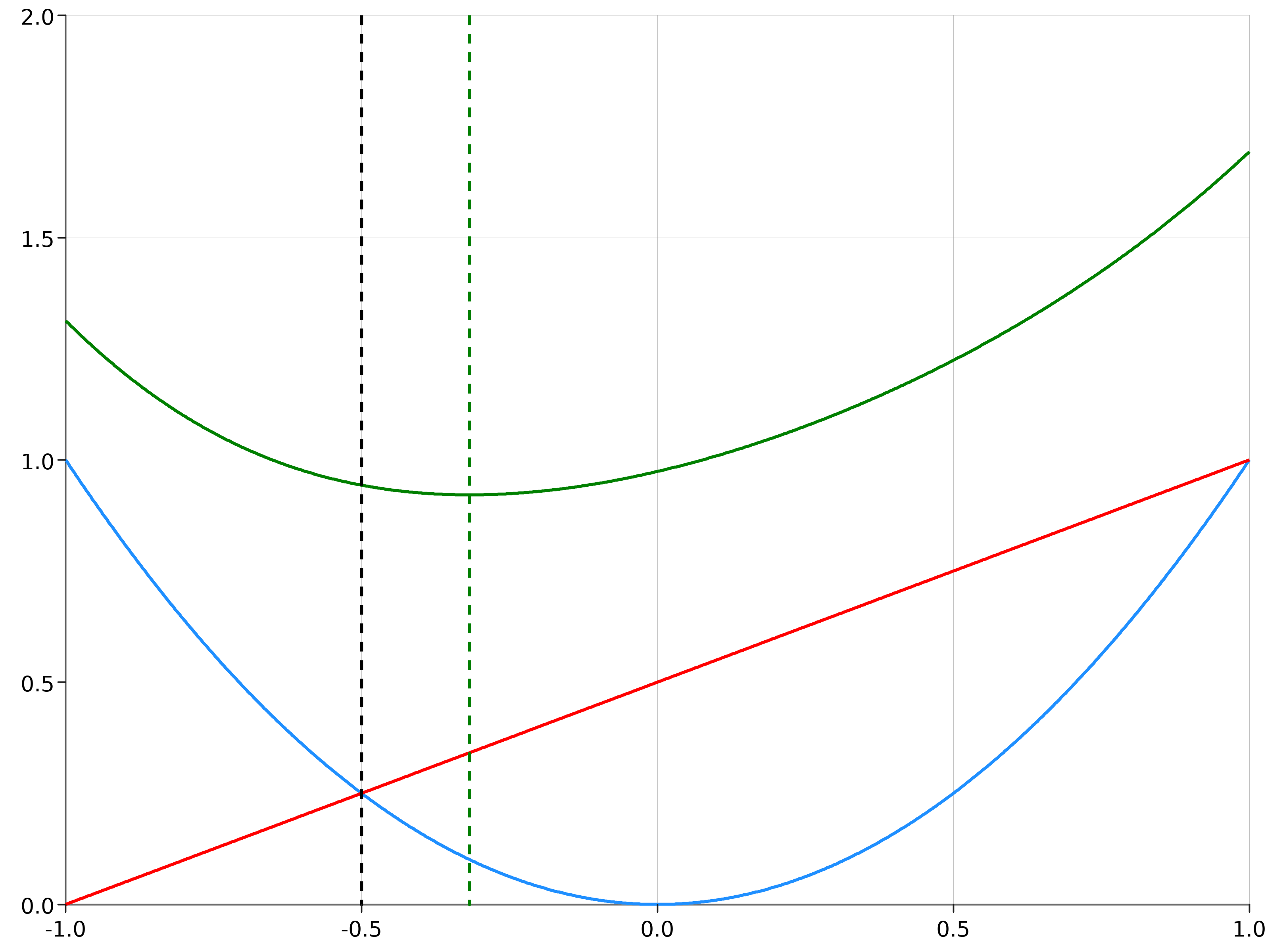Convex optimization built on Apache Commons Math
Implementation of the Barrier Method from §11.3 of Convex Optimization, Boyd and Vandenberghe, Cambridge University Press, 2004
Full API javadoc is available at: https://erikerlandson.github.io/gibbous/java/api/
Some examples are included below.
gibbous is a java project, and so can be used either with java or scala.
Versions prior to gibbous 0.3.0 were published to bintray,
which is no longer operative. It is now available through oss.sonatype.org
gibbous 0.3.0 is equivalent to 0.2.x, with the exception of now including
"org.apache.commons" % "commons-math3" % "3.6.1" as an explicit dependency.
libraryDependencies ++= "com.manyangled" % "gibbous" % "0.3.0"import org.apache.commons.math3.optim.PointValuePair;
import org.apache.commons.math3.optim.InitialGuess;
import org.apache.commons.math3.optim.nonlinear.scalar.ObjectiveFunction;
import com.manyangled.gibbous.optim.convex.*;
// create a convex objective function
QuadraticFunction q = new QuadraticFunction(
new double[][] { { 1.0, 0.0 }, { 0.0, 1.0 } },
new double[] { 0.0, 0.0 },
0.0);
// optimize function q with an inequality constraint and an equality constraint,
// using the barrier method
BarrierOptimizer barrier = new BarrierOptimizer();
PointValuePair pvp = barrier.optimize(
new ObjectiveFunction(q),
new LinearInequalityConstraint(
new double[][] { { -1.0, 0.0 } }, // constraint x > 1,
new double[] { -1.0 }),
new LinearEqualityConstraint(
new double[][] { { 0.0, 1.0 } }, // constraint y = 1,
new double[] { 1.0 }),
new InitialGuess(new double[] { 10.0, 10.0 }));
double[] xmin = pvp.getFirst(); // { 1.0, 1.0 }
double vmin = pvp.getSecond(); // 1.0import org.apache.commons.math3.optim.PointValuePair;
import org.apache.commons.math3.optim.InitialGuess;
import org.apache.commons.math3.optim.nonlinear.scalar.ObjectiveFunction;
import com.manyangled.gibbous.optim.convex.*;
// create a convex objective function
QuadraticFunction q = new QuadraticFunction(
new double[][] { { 1.0, 0.0 }, { 0.0, 1.0 } },
new double[] { 0.0, 0.0 },
0.0);
// Declare constraints separately to use for solving a feasible point
LinearInequalityConstraint ineqc = new LinearInequalityConstraint(
new double[][] { { -1.0, 0.0 } }, // constraint x > 1,
new double[] { -1.0 });
LinearEqualityConstraint eqc = new LinearEqualityConstraint(
new double[][] { { 0.0, 1.0 } }, // constraint y = 1,
new double[] { 1.0 });
// solve for a feasible point that satisfies the constraints
PointValuePair fpvp = ConvexOptimizer.feasiblePoint(ineqc, eqc);
// if not < 0, there is no feasible point
assert fpvp.getSecond() < 0.0;
double[] ig = fpvp.getFirst();
// optimize function q with the same contraints, using the feasible point
// for the initial guess
BarrierOptimizer barrier = new BarrierOptimizer();
PointValuePair pvp = barrier.optimize(
new ObjectiveFunction(q),
ineqc,
eqc,
new InitialGuess(ig));
double[] xmin = pvp.getFirst(); // { 1.0, 1.0 }
double vmin = pvp.getSecond(); // 1.0
